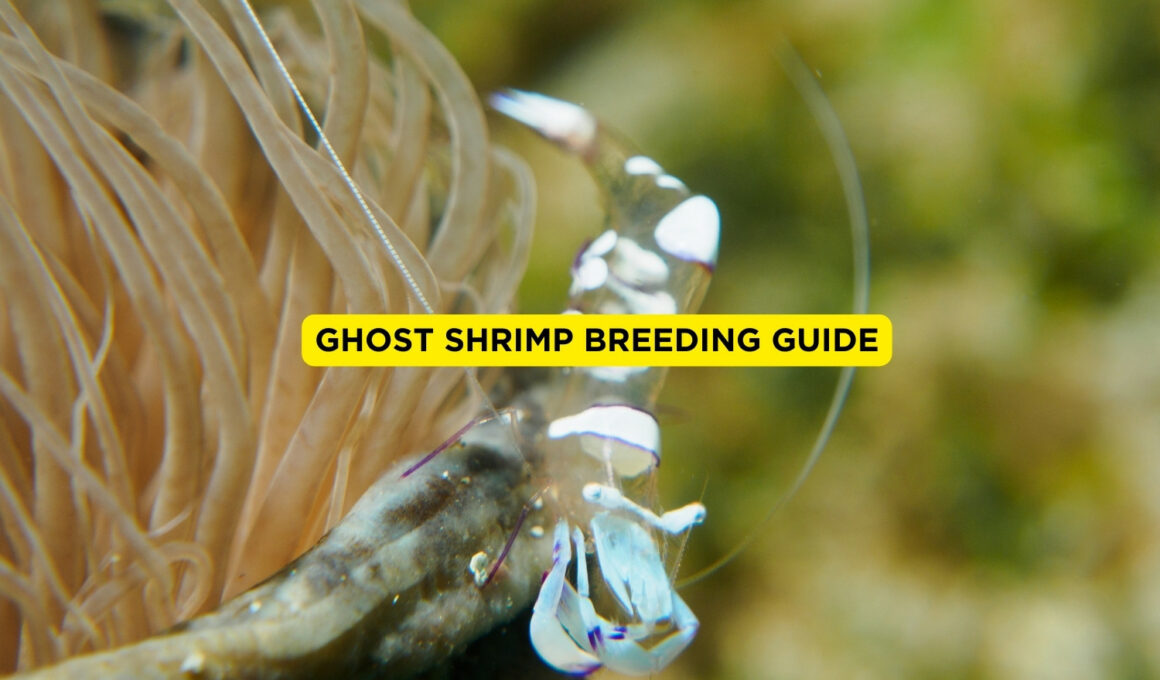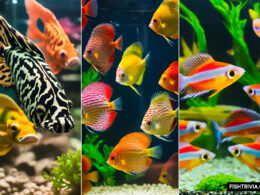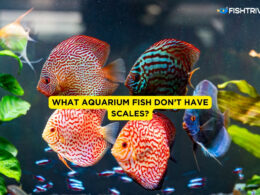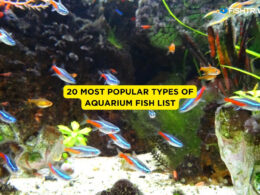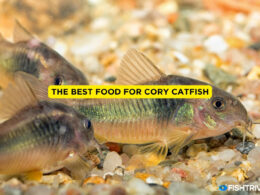In this article Show
Ghost shrimp originate in North America, but recently they are widely spread all over the world. Their popularity will be increasing among aquarium fish owners.
Ghost shrimp (Palaemonetes paludosus) is also known as glass shrimp or eastern grass shrimp. Ghost shrimp can specify three types of shrimp, but only the Palaemonetes species is famous for living in the aquarium.
This shrimp is popular as an aquarium pet and also finds food for bigger fish in the aquarium. They’re quiet and simple to look after and an excellent nutrition source for any large aggressive fishes living in aquariums.
If you’re an aquarium owner, you may love to learn how to ghost shrimp. That’s not difficult, as long as you maintain them in a healthy environment.
Read on to learn about how to ghost shrimp breeding in your aquarium. We also discuss caring for your breeding shrimp, eggs, and fry.
Ghost Shrimp Overview
Ghost shrimp are extremely healthy and can live in situations where other shrimp species can’t. It is adequate to have a minimum of 5 to 10 gallons of space when putting up a ghost shrimp aquarium.
The water temperature should be from 72°F to 82°F and a pH of 6.5 to 8.2. Add a gallon of water for each additional inch of shrimp you add to the tank. You can also bring into contact with your ghost shrimp with other shrimp-friendly fish in the aquarium.
Glass shrimp-like species comfort to grab at the gravel, exploring through small substrate grains. They’re glancing for little organic material and other foods nearly their nature.
One serious aspect to point out is there are many several types of shrimp that seem to be like ghost shrimp and can be confusing to the inexperienced eye. Accordingly, make sure you’re collecting the true species from your nearby pet store.
Ghost Shrimp Breeding Tank Setup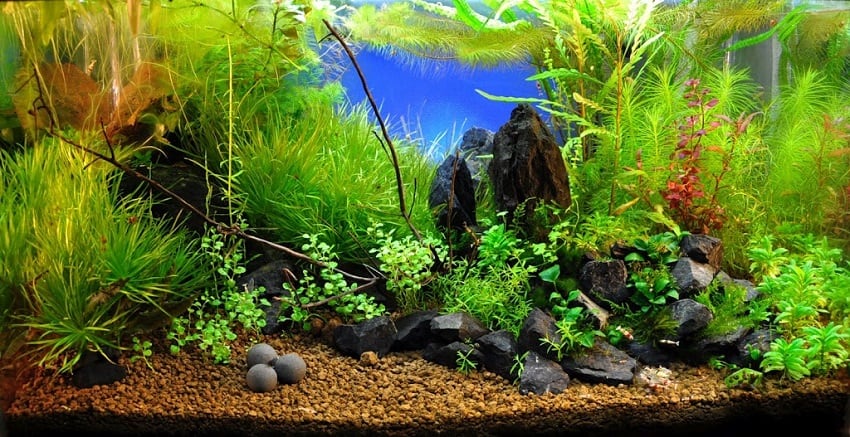
Ghost shrimp need a bigger breeding tank like most other aquarium species. Any bigger breeding tank is larger compared to shrimps’ little size, so if you want to add more you can easily add it.
In general, any 10-gallon size growing tank will be suitable for the amount of ghost shrimp, you’re breeding.
Always remember that the toughest part of breeding ghost shrimp is saving the new shrimp alive. Whether you put the eggs hatch with adult ghost shrimp into the same tank, the new could be consumed by the older. So, you will also require an additional tank to put up your fry from your parents because adults always eat up their babies.
The fry aquarium requires not to be a similar size as the breeding tank, though a relatively sized setup will provide sufficient survival conditions for the young shrimps.
You can keep up an excellent breeding tank by putting in a flow sponge filter. That let us not suck in little ghost shrimp babes and also prevents plenty of water movement. It’s plus maintains the water perfect for both your fry and adult shrimp.
When the sponge filter is not sufficient for your setup because of the presence of other fish in the tank, you can still use a canister filter, but ensure the intake with a sponge.
Power filters are not suggested due to the functional mechanism. Because the water sucked for cleaning will frequently carry little ghost shrimp within it. Some aquarists prefer to detach the full filtration system before the eggs hatch. And replace ten percent of the water daily in the tank up till the fry grows.
Ahead of the filter, you have also allowed an air pump to assure there is sufficient oxygen supply in the tank. They are significant because ghost shrimp have high oxygen demand during the time of breeding.
The ghost shrimp are excellent in portable water on the condition that you dechlorinated water to make it safer. As a replacement, wait for at least one day for the chlorine to disappear from the water before putting your ghost shrimp in the tank.
As we mentioned before ghost shrimp are sturdy aquarium pets. Ghost shrimp like a light grain or the sandy substrate with darker possibilities better.
Another important thing is the temperature. They can sustain from low temperatures to high temperatures (65°F to 82°F). Whereas keeping your aquarium temperature between 72°F to 78°F for better breeding.
Additionally, you will require a thermometer and heater for your shrimp tank. This assures the heat will appropriately distribute and the temperature remains stable at the range. In a ten-gallon tank, any 25 -75 watts heater will be effective enough for growing ghost shrimp.
Besides, the heavy cover of plants inside the interior will provide your ghost shrimps with a safer feeling during the breeding process. You can also put thin leaves plants that provide food for the shrimp.
Also, add tiny flower pots and containers to give hiding places. Put the pots and shelters upturned with entrances simply the shrimp can enter.
Java moss, Cabomba, Hornwort, etc are some excellent examples of plants for breeding ghost shrimp. These plants keep up sufficient food residue which will be a big nutrition source for young shrimp fry. So, these plants can play an important role in the area of breeding ghost shrimp.
Will Ghost Shrimp Breed in a Community Tank?
Taking a variety of fish species in a single tank is a community aquarium concept.
While you keep your ghost shrimp with other shrimp-familiar fish in the aquarium, there’s a possibility they will breed in a community aquarium.
Still, it’s not reasonable to put up the fry combined with other species in a tank. The reason standing is they are different species and together with the widely used food for bigger fish.
Also, adult ghost shrimp are infamous to eat on their own species if placed in the same aquarium. The toughest part of breeding ghost shrimp is saving the new shrimp alive. Whether you put the newborn with adult ghost shrimp into the same tank, the new could be eaten by the older.
Although it’s not highly recommended, you can still keep your ghost shrimp with other shrimp-familiar fish.
They will breed in a community aquarium. When you’re breeding your shrimp in a community aquarium, put in live plants previously. They will sufficiently grow earlier when you begin the breeding procedure.
Also, put broken pots and caves to give hiding spaces for the adult shrimp, and cover plants, especially for shrimp eggs and fry. Make sure the quality of water in your community aquarium is safe and suitable for sufficient shrimp breeding.
All around, it’s significant to understand that when you productively breed ghost shrimp in a tank, possibilities are you won’t obtain multiple babies growing to adult size. They will come out dead, as well as a short snack or from typical aquarium obstacles anyhow.
Caring for Your Breeding Shrimp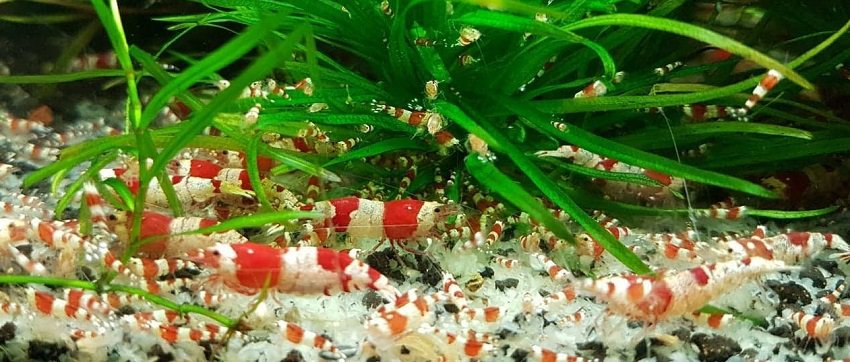
Feeding is the primary step of caring for breeding ghost shrimp. You have to give your breeding ghost shrimp a top-quality diet with plenty of algae. This balanced diet is extremely useful for preparing the fish for breeding and enhancement.
You have to regularly give them enough fish food, including crushed pellets. These sinking pellets stay at the ground of the tank and sustainably supply food.
Again, keep in mind that shrimp will grow well with plant and algae debris. So, add plants that hold foods on leaves for your shrimp to grub around on.
While it’s time to introduce your shrimp into the breeding tank, make sure your water conditions are friendly to the ghost shrimps.
Also, adjust them slowly to make sure they don’t pass away to pH or temperature shock.
Before starting the introduction process, make sure your shrimp are adjusted to the aquarium conditions. So, keep your shrimp for some minutes inside a floating bag at the top of your aquarium before introducing it.
Along with this, compulsory change your tank water once weekly. And obviously check the temperature, pH, and other chemical parameters regularly to avoid any danger.
You can remove 20 to 30% of the aquarium water with every changing cycle, although removing 40 to 50% will work as well. Basically, this will work well when you have no other species combined with your shrimp.
Avoid all large to medium-sized fish because they can eat your ghost shrimp. So, add only tiny fish with ghost shrimp to your aquarium. Finally, keep in mind that breeding the process produces a large amount of young shrimp. But is disposed to be unstable with a short lifespan.
So, when you select shrimp for pets, it’s recommended to buy healthy breeding rather than anything else. You have also taken proper care of shrimp and kept them in a clean fish tank with a lot of space and live plants.
Ghost Shrimp Eggs- Spawning and Hatching
You can easily produce eggs when you have both female and male ghost shrimp in the tank.
You just have to provide them with the proper conditions.
Ghost shrimp breed lots of twenty to thirty little green-grey eggs that are actually assembled to the female.
These eggs are placed on the rare legs that are summoned swimmerets as well. They are small limbs affixed to the shorter area of the female’s body and give rise to it appearing like the eggs are affixed to the belly.
It is recommended to shift your shrimp eggs to a fry tank earlier to protect them from eating their adults. When you don’t want to spawn in the central aquarium, it’s preferable to use a net to shift early the eggs-taking females.
Take into consideration that ghost shrimp are notorious for leaving premature eggs when clattered. So, never give any stress to the shrimp during shifting.
Usually, it should carry your ghost shrimp eggs for 21-24 days to hatch after spawning. At this time, give your female shrimp appropriate conditions. Properly take care of them and inspect their eggs during development. You will find out tiny black dots when the hatch is ready. It’s a significant sign of a ready hatch.
This will take some hours after that you provide feed for the fry. You may also wish to shift the female back to the primary aquarium or shift the fry to a nursing tank.
Point out that new ghost fry is very difficult to observe. For this purpose, you may lose a large number when you’re not careful. Consequently, give your shrimp eggs hatch enough powder algae to nourish them until they grow to look like their parents.
How to Care for Your Ghost Shrimp Fry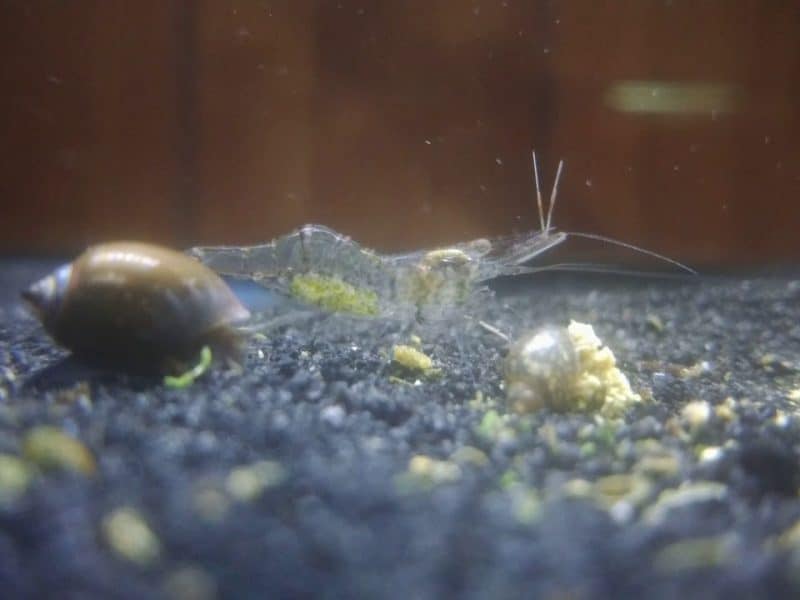
Any five to ten-gallon tank is sufficient enough for ghost shrimp fry. You have used a sponge filter to keep the water safe and clean. You can also set a layer of gravel on the ground to make it more comfortable for newborns.
We suggested setting the aquarium two to eight weeks earlier before adding the fry. This especially works for adding gravel layers and appropriate nursing.
Your aquarium fish tank remains within 72°F to 80°F, so a heater is also very significant. Though ghost shrimp are easily growing and this heater can be given up when the temperature isn’t going more than 70°F.
Along with this, you can put hornwort, duckweed, anacharis types, and floating plants. These plants provide the perfect shade and shelter for your ghost shrimp fry.
Another important thing is, the ghost shrimp fry swims through to the light. They mistakenly run into aquarium walls such as obstacles. So, there is every possibility that they can injure themselves in the light. For this, you can cover the walls with building paper to leave out ambient light.
Besides, newborn shrimp were sucked from filter and vacuum kits while clearing the substrate.
So, you have to use any sponge type of filter. It’s important to stop vacuuming your aquarium till the fry reaches a sufficient size, generally when they size up like adult ghost shrimp. You mustn’t ignore adding an air pump type of important equipment.
You can easily buy an air pump from Amazon like an online store. Why air pump is so important? They are essential because ghost shrimp have high oxygen demand during the time of breeding.
Any living plants also supply oxygen in the aquarium and work as a shelter for ghost shrimp. Always avoid products with any kind of dye or chemicals while buying products for your shrimp tank. This is because shrimp are highly sensitive to dust, debris, and any type of reagents.
Also, remove any unnecessary substance from your aquarium before adding fry to it. Finally, feed your baby shrimp with liquid fry food and micro worms for whole days within an interval.
Wrapping Up
Ghost shrimp will be an excellent addition to you as an aquarium owner. Hopefully, ghost shrimp breeding isn’t much difficult as long as you maintain the environment. They’re peaceful and simple to care for at the aquarium as well.






